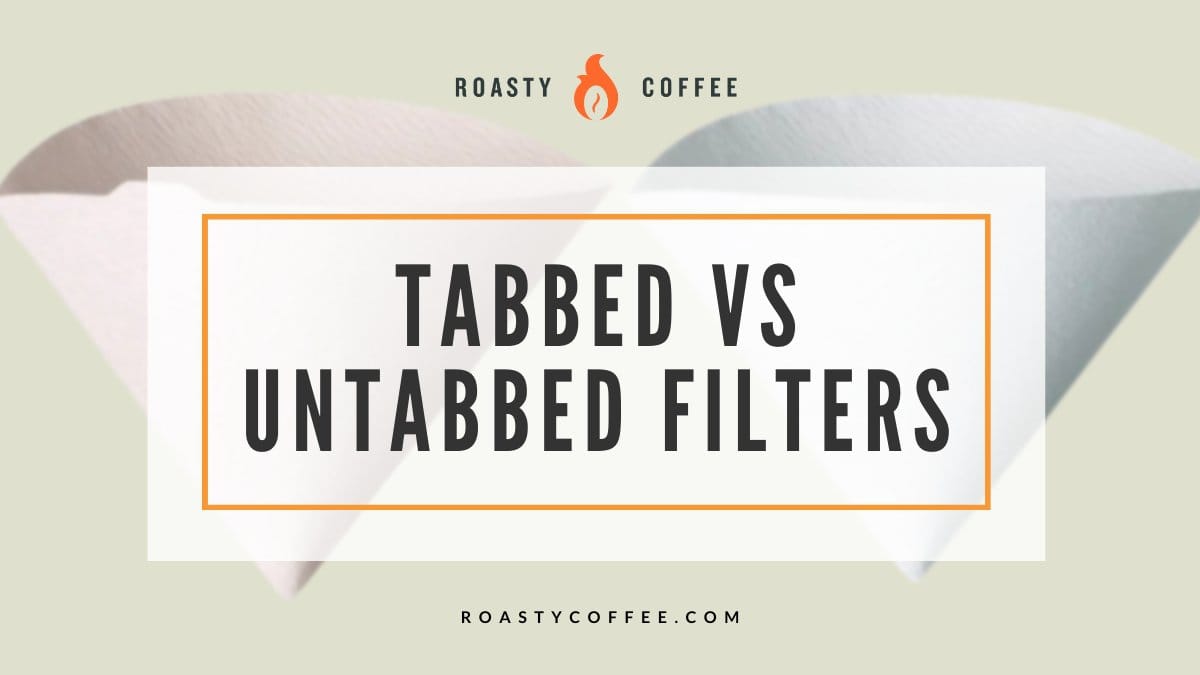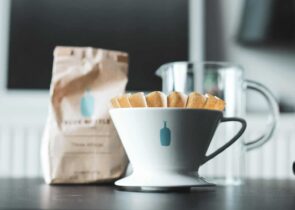Not all coffee filters are created equal. Most will do the trick for brewing, but for coffee enthusiasts who love tinkering with every aspect of their brew to create the perfect brewing method, different filter options can make a big impact on your finished cup of coffee.
This never rang more true than back in 2016, when home baristas brewing on the Hario V60 began noticing a switch up with their filters and started the whole tabbed vs untabbed coffee debate.
In this article, we will explain the difference between a tabbed and an untabbed filter, along with other key differences when comparing coffee filters.

Tabbed vs Untabbed Filters
When consumers first began seeing a change in the Hario V60 filters, the most distinguishable difference was an inch-long and quarter-inch high tab at the brim of the filter.
These tabs are designed to help separate the filters, making it easier for professional and at-home baristas alike to quickly grab a filter without needing to pry them apart.
Tabs create easier access, especially for individuals who may struggle with fine motor movements. Alternatively, untabbed filters can be difficult to separate without ripping or otherwise ruining the filter.
If this had been the only difference to the filter design there likely would have been littl recognition of the change, but consumers noted that the material seemed to have changed as well, creating slower brew times.
Let’s look at the different types of materials that can be used within coffee filters.
Filter Material
Paper filters are made with tree pulp. This pulp comes from the coarse long fibers of fast-growing softwood trees. The space between the pulp filaments is less than 15 micrometers apart, allowing only very, very fine grinds to go through.
Disposable paper filters can come in different levels of thickness, Chemex filters being some of the thickest on the market. Cone-shaped filters, made for pour-overs and drip coffee, tend to be thicker, while basket filters, primarily used for drip coffee, are on the thinner side.
When the tabbed filters first began appearing on the market, some users noted that the brew time took 2-3 minutes longer in a pour-over. This is quite a significant brewing time difference and was impacting the brew quality, and would suggest a thicker, or more densely built filter.
However, after testing from multiple professional baristas and coffee companies like Prima Coffee, this wasn’t reflected in the data collected, although brew times did vary by 10-30 seconds at the most.
This difference comes from the level of smoothness on the inside surface of the tabbed filters, which creates a slower flow. If your grinds are even slightly too fine, this could increase brew time more significantly. But with a medium-coarse to coarse grind for pour-overs, the tabbed filters will brew similarly to the untabbed filters.
The Winner of the Debate
There’s no clear wrong or right choice when it comes to filters, but purely personal preference. The tabbed filters are easier to separate, while the untabbed ones may be difficult for some to use.
The best way to decide which type of filter you like most is simply shopping around and trying out different kinds.
Where To Buy Filters
You can buy Hario V60 filters at most coffee retailer places such as Seattle Coffee Gear, Prima Coffee, or even your local cafe. You can also find them at Amazon, Target, or even Walmart or directly from the Hario sight itself.
Note that the 40 packs are the original, untabbed filters. The 100 pack is the newly designed tabbed filter. The tabbed filters are more bang for your buck and more easily accessible with the tab for separation.
FAQ
What’s the Difference Between White and Brown Paper Filters?
White paper coffee filters are bleached naturally to create a cleaner look and have less of a papery taste. Brown filters are unbleached and often need a more thorough rinsing to get rid of the papery taste.
No bleach is actually used in the process of making white paper coffee filters, so you can brew with confidence knowing your cups of coffee are as safe as possible
Are Paper Filters Recyclable?
No, they are not. But most paper coffee filters are compostable.
There are also several alternative materials for filters that can be reusable and/or recyclable: metal filters and cloth filters. These can come in a variety of forms and use different materials within those categories (i.e. cotton vs. hemp cloth filters).
Happy Caffeinating!








